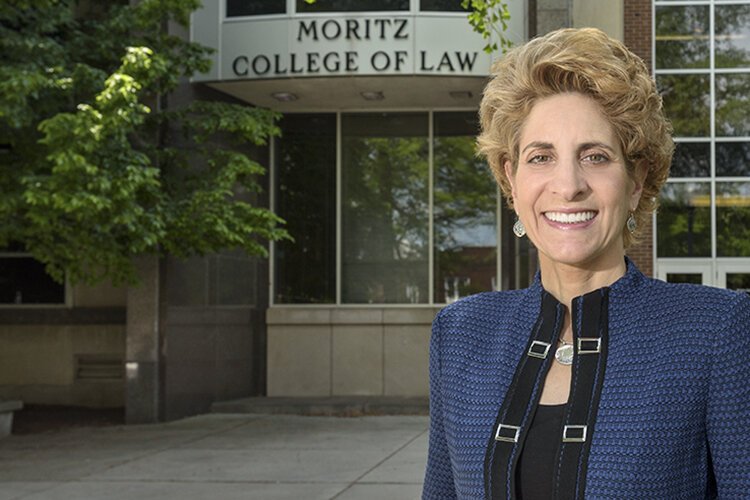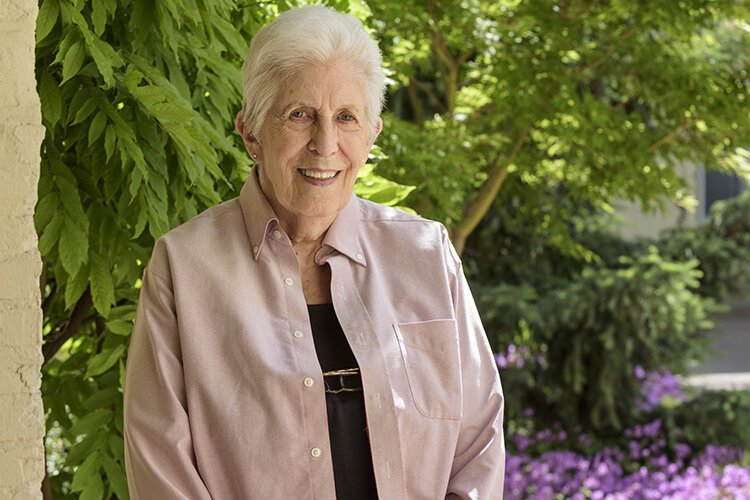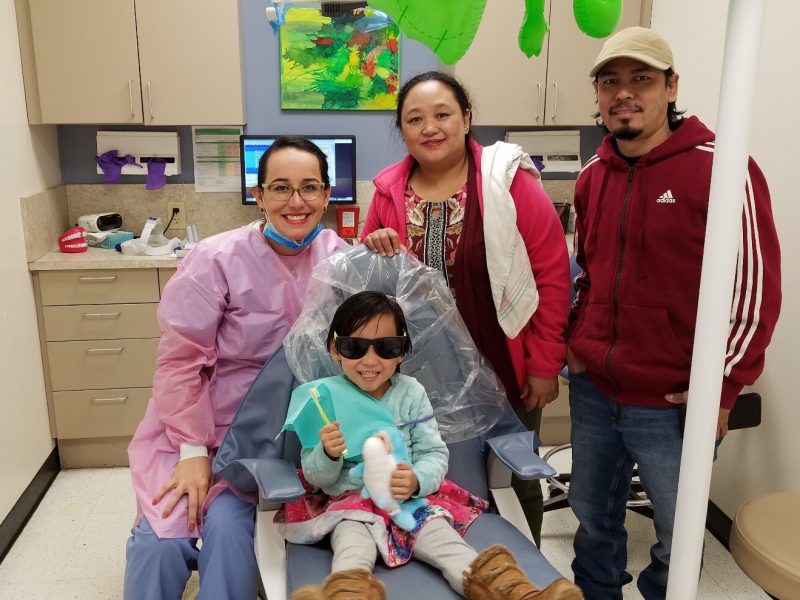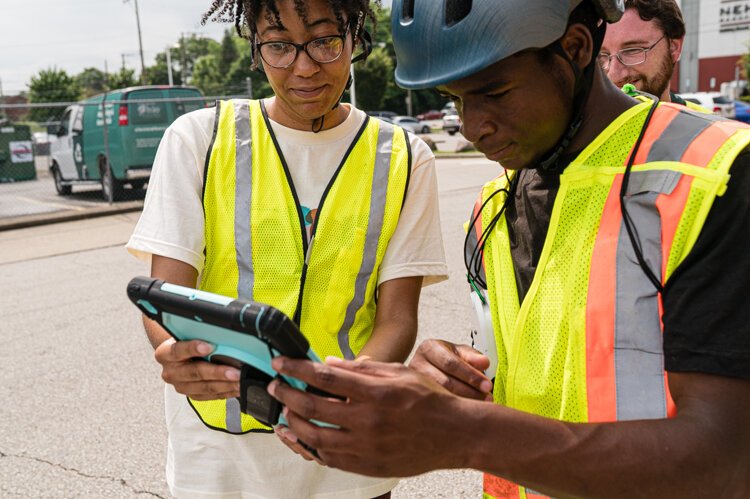Getting to Yes: Ohio has been a leader in the development of Alternative Dispute Resolution
“We’re used to thinking of everything as a win-lose scenario. But how do you reach win-win resolutions to conflict? That was how we looked at it. Conflict resolution initiatives take a certain frame of mind, and patience.” – Gov. Richard Celeste
Bea Larsen learned a tough lesson about life and her profession when she opened her own law practice in 1980.
Larsen was poised for success as a private attorney. Over the previous 10 years she had gained notoriety and confidence as a public defender in Cincinnati, handling several high-profile criminal trials. In her private practice, however, she shifted to family law, taking on divorce cases. “I discovered that although I had good trial skills, if I won a case in domestic relations court, everybody lost,” Larsen says. “The family was destroyed. I found that really upsetting.”
Then Larsen read a book that would change her life. It was, Getting to Yes: Negotiating Agreement Without Giving In, by Roger Fisher and William Ury, both members of Harvard University’s Negotiation Project, launched in 1979 to devise and promote new conflict resolution methods. Larsen realized that she could negotiate with the other side instead of trying to crush them. Larsen even took Fisher’s mediation course at Harvard.
After she became president of the Cincinnati Bar Association in the mid-1980s, her pet project was opening the Center for Resolution Disputes. The center’s four-six mediators accepted lawsuit cases, including those involving injuries and malpractice, from the Hamilton County Court of Common Pleas and settled those disputes through negotiation.
Larsen – who in 2019 published a book called, The Third Person in the Room: Stories of Relationships at a Turning Point, about her experiences in mediation – says courts, lawyers, companies and citizens now realize they can resolve legal cases faster and less expensively through mediation.
Mediation is just one form of alternative dispute resolution, or ADR, which simply are ways to resolve conflict outside the courtroom. Other forms of ADR include arbitration, settlement conferences, neutral evaluation and collaborative law.
Ohio has been a leader in the development of ADR. It started here in the 1970s and today occurs at all levels of the court system, mostly in civil cases but also in low-level, nonviolent criminal cases. Each court decides what kind of ADR to offer.
“It has become clear to a lot of people that a winner-take-all philosophy leaves a lot of bitterness and dissatisfaction,” says Sarah Cole, director of the Dispute Resolution Program at The Ohio State University’s Moritz College of Law. “If you can approach a legal issue looking at the interests of both sides, you end up with a much better outcome. It improves life in general.”
Types of Alternative Dispute Resolution – ADR
Mediation involves a neutral third-party mediator helping people in disputes reach voluntary agreements. The disputes can range from fights between neighbors over a barking dog to battles between big corporations over a contract breach. The process is informal and confidential and helps the two sides better understand each other’s concerns. In the end, the parties decide how to settle – the mediator is there only to encourage discussion.
Citizens can initiate mediation on their own, or a court may send them into mediation after a lawsuit is filed in common pleas or small claims court. Generally, if a judge refers a case to an in house mediator, the parties incur no costs. While lawsuits can take weeks or months to resolve, mediation takes a fraction of the time. And while mediation can cost money – if, for example, the parties hire a private mediator – the price is incomparable to that of a lawsuit.
“The costs of mediation are almost insignificant,” says Stephen Richey, a full-time mediator and senior counsel at the Cincinnati office of Thompson Hine, a national law firm. “Typically it’s going to take a day, maybe six hours. “Mediators charge between $250-$600 an hour,” Richey says. “Even if you hired the most expensive lawyer, mediation would typically cost a total of $1,000-$4,000, where you would spend that in one day in a court lawsuit.”
Cole says a citizen experiencing a problem with a neighbor might ask the neighbor to try mediation before filing a lawsuit or heading to small claims court. “The other party doesn’t have to agree to mediation because It’s voluntary,” Cole says. “But once the case goes to court, and the court orders them into mediation, they typically will participate.The mediator can’t stop a party from saying that they don’t want to be there, but usually they will try.”
Larsen said mediation can last just one day, although she mediated two-three hours at a time before scheduling another appointment. She brought in other professionals if necessary, like accountants if the disagreement involved money. Larsen preferred that both sides have mediation-oriented attorneys to meet with them once and explain their rights.
An attorney might also review the different types of mediation. They include:
- Evaluative mediation. The mediator ushers the parties toward a settlement, may propose a particular solution and assess their chances if the case goes to court.
- Facilitative mediation. The mediator tries to improve the relationship between the parties and seeks solutions from them.
- Transformative mediation. The mediator helps the parties communicate better, encouraging them to talk to and understand each other.
“Mediation doesn’t take away your right to take it to court later, unless you sign a settlement,” Richey says. “If you come to an agreement, it’s generally enforceable.”
Other types of ADR include:
Arbitration. This stands in stark contrast to mediation in that the decision by the third-party arbitrator is binding and final. The right to appeal is limited if it exists at all. The arbitrator’s ruling is based only on facts presented at a hearing. Arbitration is typically used in labor disputes if mediation doesn’t work. It’s the way local police and fire departments conduct contentious negotiations so they don’t have to strike.
Settlement conference. Opposing sides in a lawsuit meet before trial. A judge oversees the conference and recommends possible settlements.
Neutral evaluation. This type of ADR occurs early in litigation. A third party brings the parties together and assesses the case, and might also clarify the positions of both sides and mediate settlement talks.
Collaborative law. This is a way for couples going through divorce to settle disputes outside the courtroom. They are represented by counsel, and if no agreement is reached, they can then file a lawsuit.
Rules & regulations
Richey says the Ohio Supreme Court and local courts have extensive rules on mediation. However, those rules apply only if the mediation is court-sponsored. Private mediations are largely unregulated.
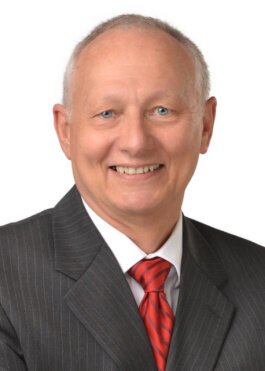
The Ohio Supreme Court has a Dispute Resolution Section, the aim of which is to promote uniform standards for ADR programs; give ADR training for judges, lawyers and mediators; and provide mediation services for Supreme Court and Ohio Court of Claims litigants and state public officials. As for mediators, courts employ them internally, and there are also private mediators like Richey. People contact him if a court lacks a mediation program, or if they simply prefer a private mediator. Richey says the larger the dispute – in terms of money, public importance or controversy – the more likely someone will turn to a private mediator.
Mediators are completely unregulated. The Supreme Court neither licenses or certifies them. That’s because the Supreme Court’s Advisory Committee on Dispute Resolution, established more than 30 years ago, advised against it, saying research had shown that no one particular type of training yields a good mediator.
Most mediators are lawyers, but Cole says they might also be therapists or psychologists. Such professionals are at least bound by their codes of ethics when mediating. The OSU Moritz school trains and supervises law students to act as mediators. Technically, however, anyone can say they are a mediator.
Richey says that despite the lack of regulatory bodies, few problems arise with mediators, because they carry no binding power – it’s up to the two sides, not the mediator, to come to an agreement. Complaints that might come up involve a mediator showing bias or working in cahoots with one side.
Nevertheless, anyone looking for a private mediator should do their homework. Lists of mediators are available from local bar associations, and Richey recommends choosing a mediator who specializes in the subject of the dispute. The Ohio Mediation Association can also help identify good mediators.
“It does bother me that some mediators are charging huge fees and pricing themselves out of the market for some people,” Larsen says. “It’s OK for corporate clients to pay large fees but not people of modest means, like when they’re getting a divorce.”
Cole said no training is required for arbitrators either. Those interested in going that route should contact the American Arbitration Association, which requires its members to receive training.
Celeste & the rise of ADR
A video on The Ohio Channel – “Dispute Revolution: A History of Ohio’s Leadership in Court-Connected Dispute Resolution” – traces ADR in the state back to the Columbus Night Prosecutor Program, which ran from 1971-1976. Law students from Capital University in Bexley and later OSU, under faculty supervision, reviewed cases, deciding whether to file criminal charges or refer the parties to mediation.
The cases in the program were low-level misdemeanors. Some didn’t even rise to the criminal level, involving disputes between neighbors, friends and roommates. Of the 4,000 cases in the program’s first year, 97 percent were successfully resolved, meaning that after a few months no additional charges were filed. Other cities sent representatives to learn about the program so they could replicate it.
In the early 1980s, as its cases dramatically increased, the U.S. Sixth Circuit Court of Appeals hatched a mediation program. It was so successful that the U.S. Tenth Circuit Court of Appeals did the same in 1988.
Gov. Richard Celeste, who served from 1983-1991, gave ADR a boost. Always a supporter of the peace movement, he formed the Governor’s Peace and Conflict Management Commission in 1989 to find ways to bring ADR to all Ohio institutions, including schools, universities and public agencies.
Former Ohio first lady, Dagmar Celeste, was deeply involved in her husband’s conflict resolution initiatives. She says it’s important to involve people in the resolution of their own conflicts. “Most of how we deal with problems in our culture is top-down,” Dagmar Celeste says. “We figure if we make something illegal and punish people enough, it will disappear. But it gets worse and metastasizes.”
In 1990, at the commission’s recommendation, the Ohio General Assembly created the Ohio Commission on Dispute Resolution and Conflict Management. It consisted of 12 members appointed by all three branches of government, and its job was to work with schools, courts, communities and state and local governments to find ways to resolve conflicts without filing suits.
Jennifer Batton, a former director of the education portion of the dispute resolution-conflict management commission, said teachers, administrators and students were trained in conflict resolution. The effort was so successful that educators from Maryland came here to learn how it was done.
Moyer & dispute resolution
The late Tom Moyer, chief justice of the Ohio Supreme Court from 1987-2010, was also an advocate of ADR. Speaking to the Joint Convention of the 118th General Assembly more than 30 years ago, he called for new methods of dispute resolution, even though, he said, the U.S. justice system was the most accessible in the world.
“But if we ask ourselves whether the system functions as effectively as it can, the answer is no,” Moyer told legislators. “Too many people are frustrated with the delay and the cost associated with resolving civil disputes. Too many cases are filed that should not be filed. Too many cases languish on court dockets only to be settled after considerable delay and expense.”
Around the time of that speech, Moyer appointed an Advisory Committee on Dispute Resolution, consisting of 34 lawyers, judges, educators, arbitrators and mediators, among others. They looked at ADR programs already thriving and sought to expand them throughout the state.
The Supreme Court adopted most of the committee’s recommendations, including creating the Dispute Resolution Section, establishing an office of dispute resolution to help courts create ADR programs and training volunteers to work in small claims mediation. To expand ADR from large cities to rural areas, grant funds were procured for a Circuit Rider Program, in which ADR trainers traveled to small courts throughout Ohio for 18 months. They brought mediation to 47 municipal courts, then to family and delinquency courts.
Then, in the 1990s, more grant money paid for a pilot program that introduced ADR to common pleas courts in Montgomery, Stark and Clinton counties. All three courts continued their ADR programs after the grant money stopped flowing.
Mediation & COVID-19
Due to COVID-19, courts are offering dispute resolution services online. Richey expects that to continue after the pandemic because it’s easier to bring parties together through a Zoom conference.
Richey says Ohio courts have also developed mediation programs that resolve eviction cases, which have become prevalent due to COVID-related job losses. Court News Ohio reported in April that 17 courts would experiment with handling eviction, foreclosure, small claims, and family cases online as part of a pilot program. The Supreme Court would sponsor the project with funds from the federal State Justice Institute.
Meanwhile, those who pioneered ADR in Ohio have moved on in their careers and in some cases geographically. Chris Carlson, the first director of the Commission on Dispute Resolution and Conflict Management, is now living in Oregon, but is still proud of what was accomplished here. She hopes the spirit of ADR will continue.
“One of the things we are learning in our society is that the problems we have today are complex,” Carlson says. “Things like economic dislocation have created dis-ease in our society. It can be discouraging. In our practice of politics, the idea of compromise has become a dirty word.”
Carlson sees encouraging signs, though. She references, “Our Towns: A Journey into the Heart of America,” a national bestseller in 2018. The authors, James and Deborah Fallows, discuss how people are overcoming societal problems on their own.
“People are finding ways to work together,” Carlson says.
Take our Civics Essential quiz to test your Alternative Dispute Resolution knowledge here.
Support for Ohio Civics Essential is provided by a strategic grant from the Ohio State Bar Foundation to improve civics knowledge of Ohio adults.
The views expressed herein do not necessarily represent those of the Ohio State Bar Foundation.

